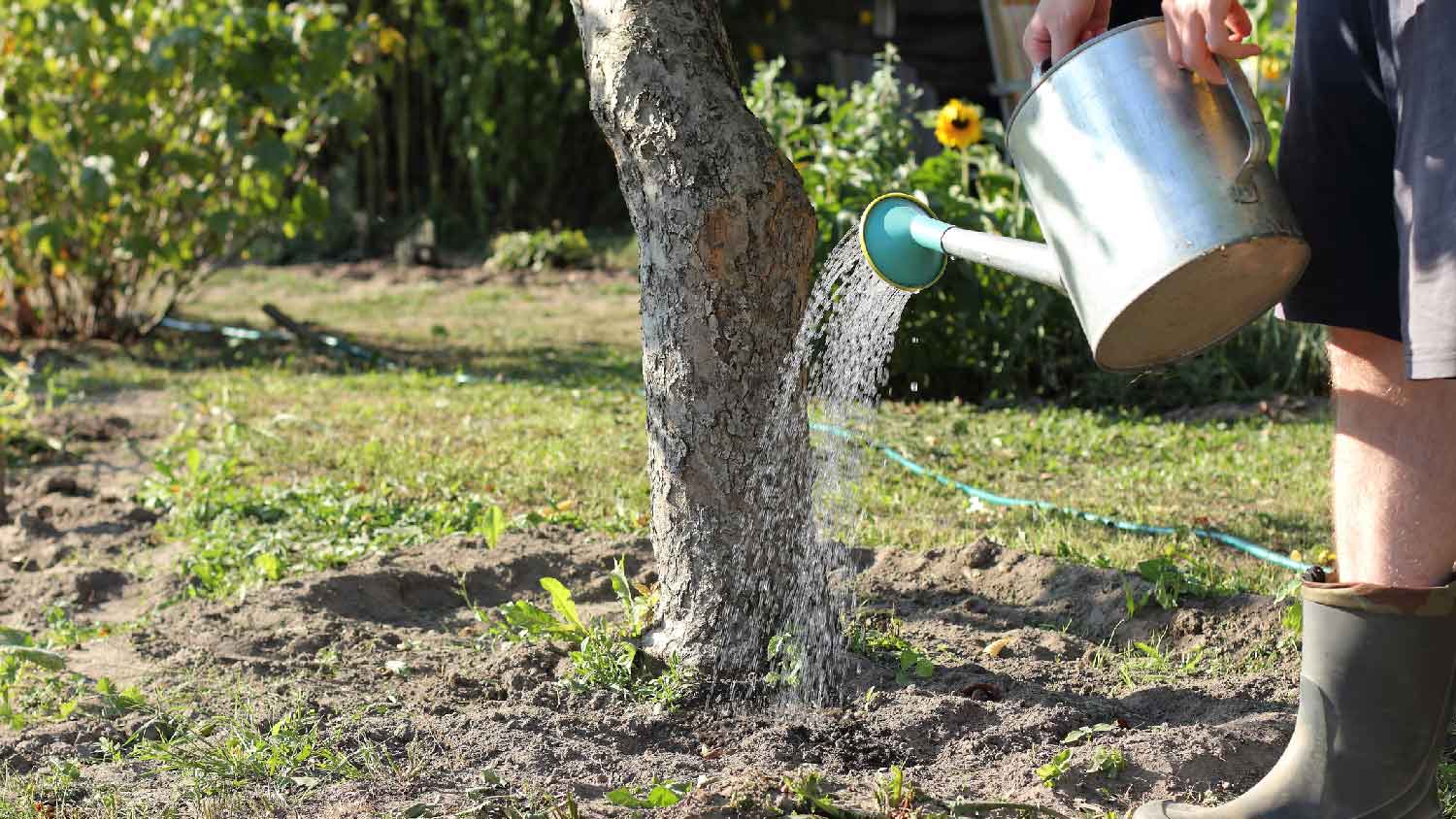
Trimming your bushes is one of the less costly aspects of landscaping, and it’s helpful to bundle many trimming services together to save money.
To water or not to water?


During dry seasons and times of drought, mature trees benefit greatly from deep watering.
Consider tree species, climate, soil type, and the health of a mature tree when deciding whether or not to water.
Your tree may need watering if you notice wilting leaves, dry soil, premature falling of leaves, or dying branches.
Consider installing an irrigation system to water your big trees.
When it comes to caring for plants on your property, mature trees might not even cross your mind. Since they seem to endure through changing seasons with little to no care, you may be wondering: Do I ever have to water my big trees? Let’s dig into the answer to this vital question, along with our best watering tips.
Mature trees mostly receive hydration through rainfall and irrigation systems. Their root systems do an exceptional job at accessing and retaining moisture, allowing them to survive without human intervention in most cases. However, during dry seasons or droughts, you should water big trees to help them stay hydrated and healthy.
When deciding whether or not your big tree needs water, you’ll want to consider the species, soil type, climate, and overall health of the tree. Some trees are more drought-tolerant and thrive in dry conditions better than other species. Additionally, if you live in an area with sandy soil that doesn’t receive much rainfall, your big trees may need more frequent watering.

It’s not always easy to tell when your big tree needs watering. To the untrained eye, large trees can appear strong and healthy when they’re really struggling.
Here are some signs that may indicate that your big tree needs to be watered:
Brown or wilting leaves
Dry or cracked soil
Stunted growth
Leaves falling too early
If you don’t have a green thumb, no worries. You can always hire a local tree maintenance pro to water your mature trees and care for any other landscaping needs. However, you can also follow these maintenance tips and water on your own.
Water your mature tree at its “dripline,” or around the perimeter of its canopy. Focusing on the dripline makes it easier to access feeder roots that keep mature trees nourished.
Water deeply and less frequently. During a drought, mature trees should only need to be watered once per month.
Without touching the trunk, apply a thick layer of mulch around your mature tree. Mulch helps with moisture retention, weed control, and regulating soil temperature.
Avoid overwatering, as this can lead to suffocation and death. After watering, soil should be moist but not soggy.
To avoid rotting, never apply water directly to the trunk.
Water during cooler parts of the day to avoid evaporation, such as the early morning or late in the evening.
Avoid pruning large branches. Instead, only trim small or dying branches.
Use a soaker hose or deep watering tool.
From average costs to expert advice, get all the answers you need to get your job done.

Trimming your bushes is one of the less costly aspects of landscaping, and it’s helpful to bundle many trimming services together to save money.

Discover the average tree maintenance cost, key price factors, and tips to save. Get expert insights to plan your tree care budget with confidence.

Get a clear estimate of palm tree maintenance cost, including trimming, fertilization, and pest control, so you can keep your palms healthy and your budget on track.

How much does an arborist cost? This guide explains the cost of different services, ongoing expenses, and other factors to consider when hiring an arborist.

Palm tree stumps can be an eyesore and may even attract pests. Learn the four methods for palm tree stump removal in this DIY guide.

When pruning crepe myrtle trees, it’s crucial to be extra cautious. Learn how to prune a crepe myrtle without damaging it.